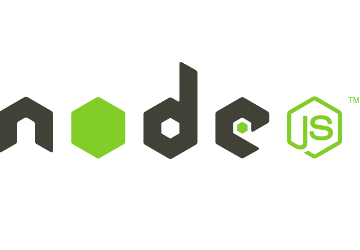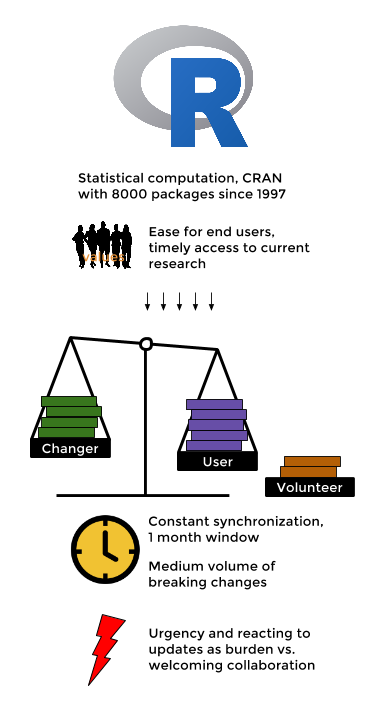Cost Negotiation and Community Values in Software Ecosystems
based on Interviews with Eclipse, R, and Node.js Developers
tl;dr We interviewed developers in Eclipse, R/CRAN, and Node.js/npm about how they distribute the costs of breaking change. Community values, practices, and tools differ significantly among ecosystems. With Eclipse valuing stability, R/CRAN valuing ease and rapid access for end users, and Node.js/npm valuing ease for developers, they each adopted distinct practices and policies. Understanding values can help resolve conflicts and to design appropriate policies and tools. We've also recently conducted a survey to learn about values and practices in 18 ecosystems, which we report separately in our survey results.
Breaking Changes

Change in software ecosystems with interdependent but independently developed packages can be disruptive. Breaking changes (e.g., removing, renaming, changing contracts) can ripple through the entire ecosystem, causing rework for many package maintainers and users.
Developers tend to avoid breaking changes when they can, but they are still common in practice. Reasons for breaking changes are similar across ecosystems, primarily: new features, changed requirements, removing technical debt, improving performance, and fixing bugs.
Negotiating Costs of Breaking Changes
While performing the change can be easy, a change can cause huge costs in rework and interruptions for users of the package. As each participant has their own goals, priorities, habits, and rhythms, there is often (implicit) negotiation about changes regarding when, how, and who. Different developers and different communities have different attitudes toward who should pay the costs of a change and when.
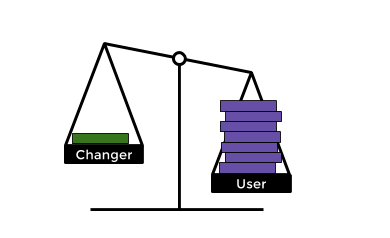
Freely made changes can impose high and unpredictable costs on users. Making a change is easy but can cause significant rework costs downstream.
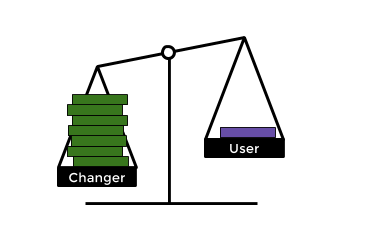
Forgoing needed changes can be costly for the package maintainer (technical debt, opportunity costs).
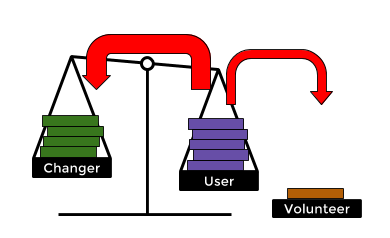
Maintainers have a variety of strategies for taking on some extra work, in order to reduce rework costs and interruptions for users.
Common Strategies to Shift and Delay Change Costs
Maintainers can reduce rework costs for users by investing extra work when making the change:
- Documenting or signaling what changed (e.g., semantic versioning) and announcing changes (e.g., twitter, conferences) makes it easier to identify when rework might be needed.
- Providing a migration guide reduce rework costs.
- Reaching out to affected developers and helping them migrate (e.g., sending pull request) reduces their rework costs.
- Involving users in change decisions can lead to those changes being less disruptive.
Maintainers can invest extra work to reduce interruptions to users, delay their rework costs, and help them plan ahead:
- Providing parallel maintenance releases and backporting important changes (e.g., security patches) so as not to force users to update before they are ready.
- Maintaining old interfaces, possibly marked as deprecated, allows users to delay rework.
- Release planning, such as yearly coordinated releases, helps users plan ahead; delaying changes and releasing multiple breaking changes together reduces interruptions.
Third parties or volunteers can take on some of change costs by vetting changes or mediating between parties. Acting as gatekeepers, they may review changes for quality and security or curate a selection of recommended packages. Some may choose to release a whole collection of packages at once in regular intervals.
Users can reduce their own exposure to change and manage their effort in monitoring change:
- Avoiding dependencies by instead recreating or copying functionality reduces exposure to external change, but risks missing important patches.
- Carefully selecting stable or reputable packages reduces change-related surprises.
- Using an abstraction layer to encapsulate dependencies can reduce the scope of future rework.
- Influencing development of used packages can discourage incompatible changes.
- Continuous integration and other automated tools producing notifications on breaking changes can help to react quickly to change. By distinguishing breaking from nonbreaking changes, such techniques can steer focus toward important changes and can avoid amounting a backlog of changes.
Community Values influence Change Practices and Cost Distribution
Common practices and policies regarding breaking changes differ drastically among different ecosystems. These differences can be explained by community values, which again align with power structures.
The Eclipse Ecosystem: Extensible IDE and framework, over 1600 extensions since 2001
The Eclipse foundation publishes more than 250 open source projects. Its flagship project is the Eclipse IDE, created in 2001. The IDE is built from the ground up around a plugin architecture. Projects can apply to join the Eclipse foundation through an incubation process in which their project and practices come under the Eclipse management umbrella. It is also common practice to develop both commercial and open-source packages separately from the foundation, and publish them in a common format on a third-party server and register them in the "Eclipse marketplace", from which over 1600 external Eclipse packages that can be installed from third-party servers through a GUI dialog.
Community Values in Eclipse: Backward compatibility to reduce costs for maintainers

A core value of the Eclipse community is backward compatibility. This value is evident in many policies, such as
API Prime Directive: When evolving the Component API from release to release, do not break existing Clients
. One can often expect that packages (e.g., commercial business solutions) developed 10 years ago will still work in a current Eclipse revision without modification. The value aligns with business needs of corporate sponsors, who provide significant funding.
Change Practices and Costs in Eclipse

Expensive for changer
Willing to accept high costs and opportunity costs for compatibility
Community created educational material explaining stability policy and nuances of binary compatibility.
Detailed change documentation for each release.
Amounting technical debt: deprecating methods rather than removing, deprecated methods kept for > 10 years, suggesting workarounds for compatible extensions (e.g., IDetailPane2, IDetailPane3); many changes and code modernization not possible.
Static analysis tool API tools to check compatibility before release broadly adopted (tools enforce policy and ease compliance).
Coordinated yearly releases, synchronization among all core projects (high overhead, causes some friction).
Backporting uncommon, since compatibility allows easy updates.
Minimal rework and interruption costs for users
Dependencies reliable and stable; involvement and rework rarely required.
Convenient for vendors who can support latest release and older ones without changes (10 year old plugins still work).
Yearly scheduled updates provide planning horizon, sufficient for many.

Friction in Eclipse: Perceived stagnant development, discouraging contributors
Perceived lack of modernization, slow decision making, and stagnant development that discourages new developers. Synchronized releases cause significant overhead and some conflict. (Disclaimer: Oversimplification, but consistent with interviewees views)
Typically, if you have hip things, then you get also people who create new APIs on top ... to create the next graphical editing framework or to build more efficient text editors. ... And these things don’t happen on the Eclipse platform anymore.
The R/CRAN Ecosystem: Statistical computation, over 8000 packages since 1997
The Comprehensive R Archive Network (CRAN) has managed and distributed packages written in the R language since 1997. R is an interpreted language designed for statistics. R has multiple repositories with different policies and expectations, including Bioconductor and R-Forge; we focus on CRAN, the largest one. CRAN formally exists under the umbrella of the R Foundation, but sets its own policies.
CRAN contains over 8000 packages. Of these, 14 are included along with the R source code, and 15 more are considered "recommended" and are bundled in binary installs. About 2200 more are cataloged as official suggestions for 33 different specializations such as finance and medical imaging. While users can distribute R scripts in many forms, publishing a package on CRAN has benefits to visibility and making it easy to install. Installing packages from CRAN is automated in every installation of the R language.
Community Values in CRAN: Ease for end users, timely access to current research

A core value of the R/CRAN community is to make it easy for end users to install and update packages. Although not explicitly represented in policy documents, this value was apparent from many interviews; for example
CRAN primarily has the academic users in mind, who want timely access to current research
. CRAN is designed and evolved by team of volunteers concerned about end users.
Change Practices and Costs in CRAN

Encouraged to work with downstream maintainers
CRAN pursues snapshot consistency: at every point in time, the newest version of every package should be compatible with the newest version of every other package in the repository.
No policy against breaking changes if snapshot consistency is maintained.
Changer needs to reach out to affected users to coordinate change; volunteers might mediate.
Developers are encouraged to run tests of all downstream packages before release.
No central or scheduled releases (incompatible with value of timely access), no parallel releases, little emphasis on version numbering (only latest version matters).
Conflict-free updates for end users, but timely rework obligation for package maintainers
Convenient package installation for package users.
No easy mechanism to install and depend on old versions though.
Urgency for package maintainers affected by breaking changes: packages may be archived if not updated within few weeks.
Aggressive reduction of dependencies by package maintainers to reduce exposure to urgent change, sometimes prefering code cloning over reuse.
Typically waiting for emails to learn about breaking changes in dependencies; active monitoring not common.
Volunteers check packages and ensure consistency
The CRAN team vets each package revision submitted to CRAN.
Partially-automated analysis assists the vetting of revisions: Ensuring consistency by executing tests of all packages that import the changed package within CRAN.
Tooling to check compatiblity with latest version of the R language itself.
The CRAN team may send emails to affected package maintainers.

Friction in CRAN: Urgency and reacting to updates as burden vs. welcoming collaboration
Some developers welcome the expected coordination and collaboration, but others see it and the urgency produced as a burden, causing constant interruption. Concerns that updates and difficulty to access prior versions can threaten scientific reproducibility. Gatekeeping is expensive but usually accepted by developers due to added value and because of gained prestige of being in repository.
And then I need to [react to] some change ... and it might be a relatively short timeline of two weeks or a month. And that's difficult for me to deal with, because I try to sort of focus one project for a couple weeks at a time so I can remain productive.
The Node.js/npm Ecosystem: Server-side JavaScript, over 250,000 packages since 2009
Node.js is a runtime environment for server-side JavaScript applications released initially in 2009, and npm is its default package manager. Npm provides tools for managing packages of JavaScript code and an online registry for those packages and their revisions. The npm repository contains over 250,000 packages and is growing rapidly.
The Node.js/npm platform has the somewhat unusual characteristic that multiple revisions of a package can coexist within the same project. That is, a user can use two packages that each require a different revision of a third package without causing a conflict. In that case, npm will install both revisions in distinct places and each package will use a different implementation.
Community Values in Node.js/npm: Easy and fast for developers to publish and use packages

A core value of the Node.js/npm community is to make it easy and fast for developers to publish and use packages. In addition, the community is open to rapid change and has culture of experimenting with APIs until they are right. There is significant emphasis on tool building and community, often through grassroots movements.
Npm was designed by one individual developer for other developers; ease for developers was one of the principles motivating the designer of npm (e.g., as he discusses in the changelog podcast). Therefore, npm explicitly does not act as a gatekeeper; it does not have review or testing requirements; in fact the npm repository contains a large number of test or stub packages. The focus on convenience for developers (instead of end users) was apparent throughout our interviews.
Change Practices and Costs in Node.js/npm

Releasing updates is easy and fast
Breaking changes are generally seen as necessary for progress and are accepted if signaled with increased major release number (semver).
More common to remove technical debt, fix APIs.
Maintenance releases (backporting) common if many users depend on old version, especially for security patches.
No central release planning, no gatekeeping (both would contradict the community's values).
Relatively high frequency of updates requires frequent rework
Npm allows to use multiple versions of a package at the same time (only node version itself can cause conflicts). Therefore, it is easy to keep using old revision: updating is a choice, not an urgency.
Social mechanisms and tools (e.g., greenkeeper.io) help to monitor changes.
Semantic versioning is increasingly reliable and expected by community.

Friction in Node.js/npm: Rapid change requires constant maintenance or risk falling behind
Perceived challenge to find the right balance between progress and burden on users. Progress and ability to chose to not update seen as benefits, but not updating can quickly lead to a large backlog that can require expensive rework to catch up.
Last week's tutorial is out of date today.


